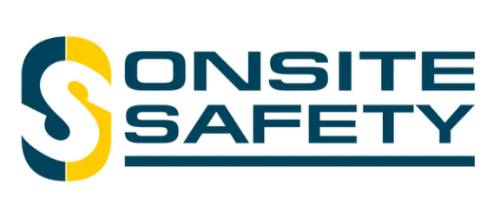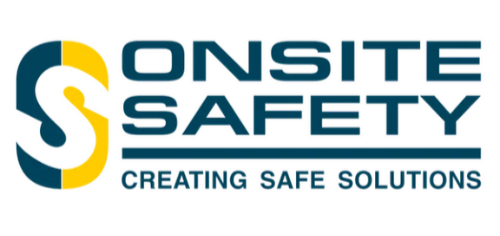Resources
Scaffold Safety: Understanding Roles and OSHA Training Requirements
TOP 3 REASONS FOR SCAFFOLD SAFETY
- 29,000 scaffold fall injuries occur annually
- 9% of construction deaths scaffold-related
- Scaffold citations are within OSHA’s top 10
A scaffold is an elevated, temporary work platform used to support employees and their materials. There are four categories of personnel on scaffolding worksites. They are: competent person, trained erector/dismantler, trained scaffold worker and prohibited non-trained person. If you are not trained in scaffold, demonstrated that you are knowledgeable, capable and authorized, then you should never use a scaffold on the job site. There is OSHA required specific training for each category of personnel on scaffolding in which each person of these categories must be trained. Employees may be subject to scaffold retraining if the employer has reason to believe the employee lacks the understanding or skill needed to work safely with scaffolding. The Bureau of Labor Statistics states that 65% of the construction industry frequently work on scaffolds. It is your job to understand that being trained and knowledgeable can help protect workers.
Essential Hard Hat Safety: Protection, Types, and Best Practices
TOP 3 HARD HAT TIPS
- Sunlight can damage a hard hat
- Do not insert holes or apply labels
- Never paint a hard hat
Hard hats are essential to the protection of workers and prevention of serious head injury, trauma and death. In 2012, 1,020 workers died from head injuries sustained on the job. There are various types and classes of hard hats, designed for specific jobsite situations. You should always be sure to be wearing the correct hard hat while on the job. Type I hard hats are designed to reduce the force of impact from a blow to the top of the head. Type II hard hats are intended to provide protection against both side impact and blows to the top of the head. Class G-General helmets provide protection against impact and object penetration with a voltage protection limited to 2,200 Volts. Class E-Electrical Helmet: Class E hard hats deliver the most protection against electrical hazards with up to 20,000 volts. Class C- Conductive helmets are for lightweight impact protection with no protection from electric. It is essential to take care of your head protection as it is what will potentially save you from head injury, brain trauma or death.
Fall Protection Safety: Essential Practices to Prevent Injury and Save Lives
TOP 3 FALL PROTECTION TIPS
- Clean PFAS after use and store in dark, dry area
- Always use approved anchor points
- Enclosed stair way must have a handrail
Knowledge and use of fall protection on job sites can create a safer work environment for all workers. Falls had the highest number of citations issued by OSHA in 2015 and 2016. Nineteen percent of falls from ladders were due to a missing bottom rung. Fall related injury and death can be avoided with proper fall protection use and education. According to OSHA, fall protection is required whenever there is a potential to fall six or more feet. Stairways must have a graspable handrail. Ladders must be properly secured and stable. Guardrails, PPE and nets could save your life. After choosing the fall protection appropriate for you and job site circumstances, it is just as important to inspect your equipment as it is to use it. When inspecting your equipment, always check for cuts, rust and impact indicators. Workers must be OSHA trained and understand the importance of fall protection while working and with use of stairs and ladders.
OSHA Ladder Safety: Proper Use, Inspections, and Hazard Recognition
TOP 3 LADDER SAFETY TIPS
- Use ladder clamps to secure ladder tightly
- Never place ladder on unstable base
- Never stand on top step
Workers are required by OSHA to be able to recognize hazards related to ladders and know how to minimize them. Before you can understand how to properly use a ladder and recognize hazards, you should understand the basic components and differences of an extension ladder and a step ladder. Ladders should be inspected for defects before each use and tagged and removed if defective. Every time a ladder is in use it should be safely secured, placed on a stable surface, carried with the front end slightly higher than the back and angled at 75 degrees. A ladder must to extend a minimum of 3’ above the working level service if being accessed. Workers should always face the ladder when ascending or descending, never let your belt buckle pass the side rail and use your tool belt to carry materials or tools. Be sure to always safely transport ladders by ensuring they are secured to ladder racks or truck bed.
Excavation Safety:
Hazard Prevention, Competent Person Role, and OSHA Guidelines
TOP 3 EXCAVATION TIPS
- Always identify and correct hazards
- Spoils must be at least 2’ from edge.
- Cave-ins can happen without warning
There are multiple hazards that can occur during an excavation. These could include cave-ins, falls, falling loads, hazardous environment, mobile equipment and underground utilities. The role of a competent person is to have required training and knowledge such as, soil classification, use of protective systems, trench inspection and OSHA’s requirements for excavation, as well as be able to identify hazards and hold the authority to eliminate them. Protection is required in trenches of five or more feet and should still generally be used in excavations less than five feet. Ladders are required when trenches are 4’ or more in depth. 25’ is the maximum distance a person can be from a ladder or ramp. When working in excavations, it is your responsibility to work defensively, follow any excavation and trenching safety rules, correct hazards when able and report all other hazards to your supervisor.
Hand and Power Tool Safety: Proper Use, Maintenance, and OSHA Guidelines
TOP 3 TOOL TIPS
- All tools have a potential for injury
- Keep power tools and cords away from water
- A dull knife slips easier than a sharp knife
Hand and power tools can create great risk on the job site when not used, inspected or cared for properly. Workers should always use proper PPE and understand hazards when using power tools. Power tool hazards on the job site can include broken tools, dull knives, damaged cords and improper guarding. An understanding of general hand and power tool safety practices can help with a safe operation and overall safer environment. When using hand or power tools on a job site, you should understand how to properly store, use, maintain and clean them in order to protect you and those around you. Workers using hand or power tools must follow OSHA standards and manufacturer’s guidelines. Approaches for safe operation will differ in manually operated and power operated tools. Be sure to know the differences between hand and power tools and how to safely operate each tool you use.
Frequently Asked Questions
Want more information? We've provided answers to some common inquiries below.

